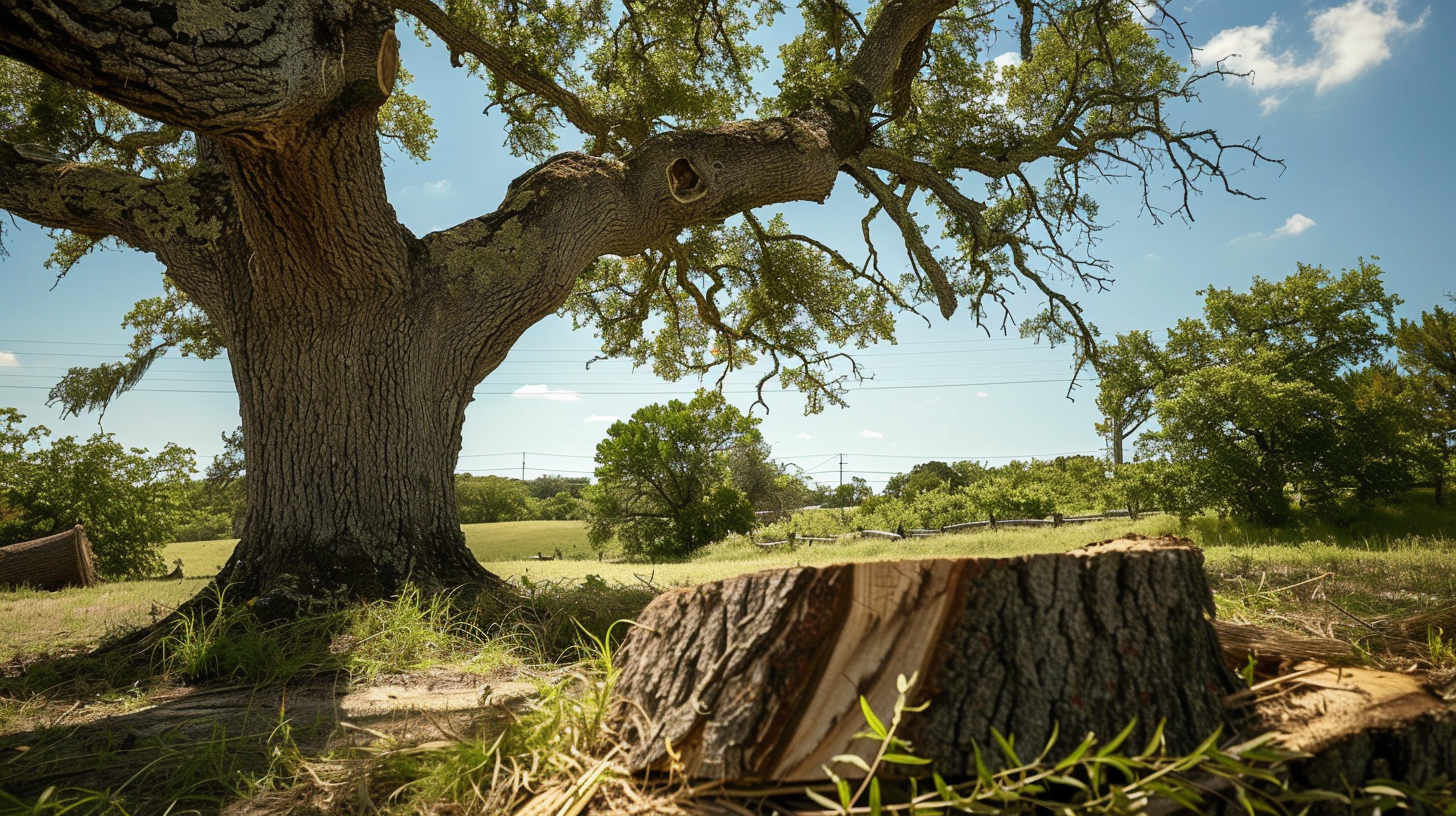Table of Contents
Oak trees are a staple of many landscapes, providing shade, beauty, and a sense of history. However, there may come a time when cutting down an oak tree is necessary or desirable. Whether it’s due to safety concerns, property development, or aesthetic reasons, removing an oak tree can be a complex and regulated process. In this article, we’ll explore the considerations and regulations surrounding the removal of oak trees, as well as the alternatives to cutting and the process of cutting itself.
Why Would You Want to Cut Down an Oak Tree?
Oak trees can pose a number of challenges for property owners, from safety risks to aesthetic concerns. Here are some of the most common reasons why someone might want to cut down an oak tree:
Dead or Dying Trees
A dead or dying oak tree can be a significant safety risk, as branches can fall and cause damage or injury. Additionally, a dead tree can attract pests and create an eyesore on the property. If an oak tree is dead or dying, it’s often necessary to remove it to prevent further damage or risk.
Safety Concerns
Oak trees can also pose a safety risk if they’re growing too close to power lines, buildings, or other structures. In these cases, removing the tree may be necessary to prevent damage or injury. For example, if an oak tree is growing too close to a power line, it can cause a fire hazard or disrupt electrical service.
Property Development
Oak trees can sometimes stand in the way of property development or construction projects. If a tree is located in an area where a building or road needs to be constructed, it may be necessary to remove it. This is often the case in urban areas where space is limited and development is necessary to meet growing population demands.
Aesthetic or Landscaping Purposes
Finally, some property owners may simply want to remove an oak tree for aesthetic or landscaping reasons. For example, if an oak tree is blocking a view or creating too much shade, removing it can improve the overall look and feel of the property.
Regulations and Permits
Before cutting down an oak tree, it’s essential to understand the local regulations and permits required. These can vary widely depending on the location and type of tree.
Local Ordinances
Many cities and towns have ordinances in place to protect trees, including oak trees. These ordinances may prohibit the removal of certain trees or require a permit before removal. For example, in some areas, trees over a certain size or age may be protected, and removing them without a permit can result in fines or other penalties.
Permits and Applications
If a permit is required, the process typically involves submitting an application to the local government. This application will typically require information about the tree, including its location, size, and condition. The government will then review the application and determine whether the tree can be removed.
Environmental Regulations
In addition to local ordinances, there may be environmental regulations that impact oak tree removal. For example, if an oak tree is located in an area protected by the Endangered Species Act, removing it may be prohibited or heavily regulated.
Considerations Before Cutting
Before cutting down an oak tree, there are several important considerations to keep in mind. These include the ecological impact, historical or cultural significance, and property value.
Ecological Impact
Removing an oak tree can have a significant ecological impact, particularly if the tree is providing habitat for wildlife. Oak trees are a crucial part of many ecosystems, providing food and shelter for a wide range of species. Removing a tree can disrupt this ecosystem and have long-term consequences for the environment.
Historical or Cultural Significance
Oak trees can also have historical or cultural significance, particularly if they’re located in an area with significant historical or cultural importance. For example, an oak tree may be a landmark or have cultural significance to a particular community. Removing such a tree can be controversial and may require special permits or approvals.
Property Value
Finally, removing an oak tree can impact property value, both positively and negatively. On the one hand, removing a tree can improve the look and feel of a property, increasing its value. On the other hand, removing a tree can also reduce the property’s value, particularly if the tree is a significant feature of the landscape.
Alternatives to Cutting
Before cutting down an oak tree, it’s worth considering alternatives. These can include pruning and maintenance, tree care and preservation, and relocation.
Pruning and Maintenance
Regular pruning and maintenance can extend the life of an oak tree and reduce the need for removal. This can include trimming branches, removing dead wood, and providing regular care and attention.
Tree Care and Preservation
Tree care and preservation are critical for maintaining the health and longevity of an oak tree. This can include providing regular watering, fertilization, and pest management.
Relocation
In some cases, it may be possible to relocate an oak tree rather than cutting it down. This can be a complex and expensive process, but it can be a viable alternative to removal.

The Cutting Process
If cutting down an oak tree is necessary, it’s essential to understand the process involved. This includes preparation, cutting techniques, and debris removal.
Preparation
Before cutting down an oak tree, it’s essential to prepare the area. This includes removing any obstacles, such as power lines or nearby structures, and ensuring the area is clear of people and pets.
Cutting Techniques
There are several cutting techniques used for removing oak trees, each with its own advantages and disadvantages. These include:
| Technique | Advantages | Disadvantages |
|---|---|---|
| Felling | Quick and efficient | Can be dangerous if not done correctly |
| Sectional removal | More controlled than felling | Requires specialized equipment |
| Relocation | Preserves the tree | Can be expensive and complex |
Debris Removal
After cutting down an oak tree, it’s essential to remove the debris. This can include chipping or hauling away the wood, as well as disposing of any remaining debris.
Conclusion
Cutting down an oak tree is a complex and regulated process that requires careful consideration. From the reasons why someone might want to remove a tree to the regulations and permits required, and from the ecological impact to the actual cutting process, there are many factors to consider. By understanding these factors, property owners can make informed decisions about whether to cut down an oak tree and how to do so responsibly.
Remember, oak trees are a valuable resource that provide many benefits to the environment and human communities. Before cutting down an oak tree, it’s essential to consider the alternatives and the potential consequences of removal.




